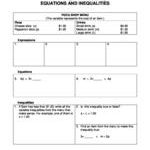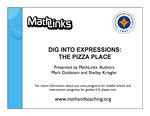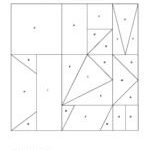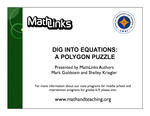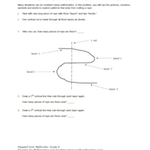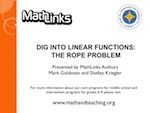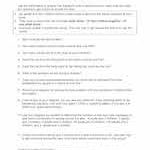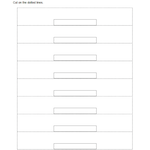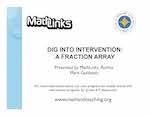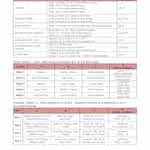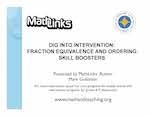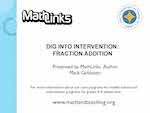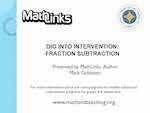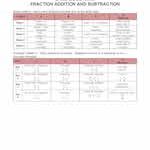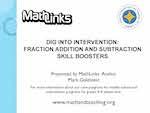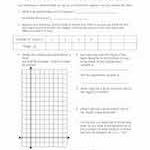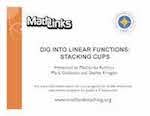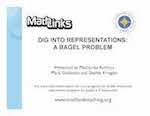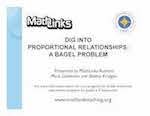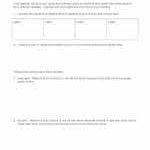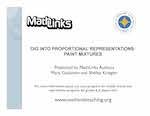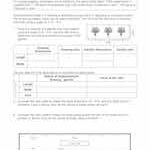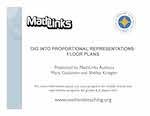FREE MIDDLE SCHOOL MATH WEBINARS OFFERED BY THE MATHLINKS TEAM
Please check back for our next series of webinars and check out recordings of our past webinars below.
Past Webinars:
MAKING CONNECTIONS IN MIDDLE SCHOOL USING BIG IDEAS
At the Center for Mathematics and Teaching, we know that connecting Big Ideas makes instruction more efficient for teachers, and the content more meaningful for students.
Join us as and experience an example from a lesson that brings some middle school Big Ideas alive. You’ll see what we mean by making connections and doing it efficiently, leaving more time for enrichment, intervention, practice, projects, and assessments.
Recording of MAKING CONNECTIONS IN MIDDLE SCHOOL USING BIG IDEAS (Click here)
MATH INTERVENTION IN THE MIDDLE GRADES
The team at the Center for Mathematics and Teaching has worked with districts for 15 years to address the needs of struggling learners. Now, more than ever, it seems that students are challenged to learn grade level content without the necessary prerequisite skills and support.
Join us as we discuss some of the basics about catching students up, what research and experiences have driven our work, and then some specific ideas of how you might do that, especially in intervention courses or summer programs.
Then learn about our MathLinks Essentials modules that have helped hundreds of teachers and thousands of students in addressing these issues.
Recording of MATH INTERVENTION IN THE MIDDLE GRADES (Click here)
GETTING TO KNOW MATHLINKS: CORE (2nd Ed.)
MathLinks: Core (2nd ed) is ready for piloting and purchase for Grades 6, 7, and 8. In these courses, students explore and practice ALL the Common Core State Standards for Mathematics in about 100 class hours, leaving plenty of time for review, enrichment, tasks, projects, and assessments (all included with the program). Take a short tour of MathLinks: Core (2nd ed), learn about some of the strategies that are built into it, and discover some of the ways we aim to bring joy and engagement into your mathematics classroom. A free puzzle book will be provided to everyone who attends.
Recording of GETTING TO KNOW MATHLINKS: CORE (2nd Ed.) (Click here)
ENGAGE STUDENTS WITH ACTIVITY ROUTINES
In MathLinks: Core (2nd ed), we include about ten activity routines per course that engage students in problem-solving or practice on a recurring basis. Learn about a few of our favorite routines that can be adapted to most curricula and grade levels. Poster Problems add variety to classwork as students get out of their seats for group review and problem-solving practice. Four in a Row provides skills practice with a game similar to Connect 4®. Match and Compare Sorts challenge students to make vocabulary connections through partner work and discussion. Big Square Puzzles provide engaging practice that can be done individually or collaboratively. Why Doesn’t It Belong offers entry-point opportunities for students to contribute ideas to meaningful mathematics discussions. After this session, participants may choose to create similar topic-appropriate activities for their students. Free examples will be provided to everyone who attends.
Recording of ENGAGE STUDENTS WITH ACTIVITY ROUTINES (Click here)
GEOMETRY IN GRADES 6-8
We share excerpts from our 6th, 7th, and 8th grade geometry “units” guaranteed to engage students in several of the important grade level standards for these topics.
For all three grade level units, students are posed with an interesting and challenging geometry problem that they can attempt, but likely not finish without more knowledge and skills. After students are led to discover the relevant formulas, they practice using the formulas on a variety of problems, and then apply this new knowledge to solving the opening problem.
6th grade students investigate areas of common polygons.
7th grade students investigate area of a circle.
8th grade students investigate volume of a cylinder.
Each grade level unit, in its entirety, is designed to take about 13 class hours.
Recording of GEOMETRY Webinar. (Click Here)
PROBABILITY AND STATISTICS IN GRADES 6-8
We share excerpts from our 6th, 7th, and 8th grade probability and statistics “units” guaranteed to engage students in several of the important grade level standards for these topics.
6th grade students collect data and learn about measures of center and variability by creating a human number line and bar graph.
7th grade students collect data from a dice experiment and make predictions based on their intuition. More experiments and practice lead to learning probability vocabulary, techniques for organizing data, and then going back to analyze and draw conclusions from the original experiment.
8th grade students examine real data comparing years of education to income and unemployment rates as a vehicle to learn about creating scatter plots, investigating patterns of association, and estimating equations of lines of best fit.
Each grade level unit, in its entirety, is designed to take about 13 class hours.
Recording of PROBABILITY AND STATISTICS Webinar. (Click Here)
GRADE 6: INPUTS AND OUTPUTS
Connecting beginning algebra and proportional reasoning topics with multiple representations
We will use unit rates, tables, double number lines, graphs, and algebraic input-output rules (equations) to describe visual patterns, compare prices, and solve rate problems. In this set of lessons, which takes about 14 class hours to complete, students will dive into 6.EE.9 and make connections to 6.RP.3, 6.NS.3, 6.EE.2, 6.EE.6.
Recording of INPUTS AND OUTPUTS Webinar. (Click Here)
GRADE 7: MAKING PROPORTIONAL RELATIONSHIPS MEANINGFUL
Furthering algebra and proportional reasoning connections with multiple representations
We will use unit rates and unit prices, tables, double number lines, graphs, and equations to explore what it means for a relationship between quantities to be proportional, identify the constant of proportionality, and solve problems. In this set of lessons, which takes about 13 class hours to complete, students will dive into all the 7th grade Ratio and Proportional Relationship standards (7.RP.1, 2, 3) and make connections to 7.NS.3, 7.EE.3, and 7.G.1.
Recording of MAKING PROPORTIONAL RELATIONSHIPS MEANINGFUL Webinar. (Click Here)
GRADE 8: AN INTRODUCTION TO FUNCTIONS
Leveraging multiple representations to transition from proportional reasoning and beginning algebra to a more formal function concept
We will use words, pictures, tables of numbers, and graphs to represent, describe, and analyze situations involving area, money, and rates. We will explore the concept of a function, compare representations of functions, and look at examples of functions and non-functions. We will define function and graph of a function, and identify examples and non-examples of functions. In this set of lessons, which takes about 15 class periods to complete, students will tackle all the 8th grade Functions standards (8.F.1, 2, 3,4, 5) and make connections to 8.EE.5.
Recording of AN INTRODUCTION TO FUNCTIONS Webinar. (Click Here)
MATHEMATICS INTERVENTION:
STRATEGIES TO CATCH STUDENTS UP IN MIDDLE SCHOOL
Catch-up Strategies: Whole Numbers Multiplication (recorded video)
By middle school, students should be computationally fluent in multiplication of whole numbers, but many are not. This session will focus on strategies to improve computational fluency involving multiplication in base 10. The session will be about 30 minutes, plus Q & A time.
Are you looking for ways to catch students up in grades 6-9 beginning in Summer or Fall? At the Center for Mathematics and Teaching, we’ve devised a sensible strategy and targeted resources that focus on the major work of middle school. The team at the Center for Mathematics and Teaching invites to view this recorded webinar that will focus on strategies and resources to help students catch up in math in middle school. This webinar is appropriate for you if you are anticipating students with knowledge gaps, or have already met them and know for sure.
Learn about two engaging activities that make expressions and equations accessible to all learners. You’ll want to use these in your classroom!
Click the images below to watch the webinar, and to download the session slides and handouts.
The Pizza Place Use a real life context to introduce variables, expressions, and equations. It will make so much sense to all of your students!
In this activity, students build meaning for variables, expressions, and equations. They use sense-making strategies, such as substitution, to determine if a solution makes an equation true.
The Polygon Puzzle This is a fun way to build meaning with expressions and equations.
In this activity, students write algebraic equations, and evaluate algebraic expressions using substitution.
Learn how to motivate through engaging problems. In these problems students look for patterns and then generalize them using algebra.
Click the images below to watch the webinar, and to download the session slides and handouts.
Cutting the Rope This one looks super difficult, but after students persevere a bit, and experiment with different cases, the answer often pops right out.
In this activity, students use multiple representations to solve a problem, and interpret slope and y-intercept in a meaningful way.
The Lake Problem Students dive in and get really involved in algebraic thinking.
In this activity, students use multiple approaches and tools to solve a problem. They use algebra to generalize a solution for any case.
Take away some ideas about how to address fraction concepts intervention with struggling learners.
Click the images below to watch the webinar, and to download the session slides and handouts.
Fraction Array This tried and true hands-on activity addresses several important areas of fraction concept development that students may not have gotten in elementary school.
In this activity, students create and use a fraction array to explore fraction concepts, including ordering and equivalence. They use sense-making strategies to compare and order fractions.
Fraction Concepts Skill Boosters How can you strategically help students work on building fraction concepts knowledge after elementary school without taking up weeks of class time?
In this activity, you learn how to design a short practice routines to fill gaps for skills related to fraction equivalence and ordering.
Take away some ideas about how to address fraction operations intervention with struggling learners.
Click the images below to watch the webinar, and to download the session slides and handouts.
Fraction Addition What do you do when students should have learned to add fractions in previous grades, but didn’t. We’ll share some ideas with you that just might work.
In this activity, we look at adding fractions with a visual model, and also some mental and procedural strategies for computing.
Fraction Subtraction What do you do when students should have learned to subtract fractions in previous grades, but didn’t. We’ll share some ideas with you that just might work.
In this activity, we look at subtracting fractions with a visual model, and also some mental and procedural strategies for computing.
Fraction Addition and Subtraction Skill Boosters How can you strategically help students work on building fraction operations skills after elementary school without taking up weeks of class time?
In this activity, you learn how to create a routine to help students practice fraction addition and subtraction.
Learn about three engaging applications that make linear relationships accessible to all learners.
Click the images below to watch the webinar, and to download the session slides and handouts.
Stacking Cups This is a great way for students to have a hands-on experience with slope and intercept. They will use measurement, gather data, record it in tables, and make and analyze graphs.
In this activity, we look at organizing data and using multiple tools and approaches to solve a problem, and we explore some features of linear functions.
Dig into Representations: A Bagel Problem In this activity, we examine multiple representations for displaying which is a better buy and make connections among those representations.
Dig into Proportional Relationships: A Bagel Problem In this activity, we examine properties of a proportional relationship that are revealed through different representations of linear functions.
Try two lessons that that make proportional reasoning representations accessible to all learners.
Videos, slides, and handouts are coming soon.
Dig into Proportional Relationships: Paint Mixtures In this activity, students use pictures to illustrate and compare proportional relationships. Students translate pictures into tape diagrams to make sense of and solve problems.
Dig into Proportional Relationships: Explore Floor Plans In this activity, students use ratio strips to better understand scale drawings. Students connect ratio strips to representations such as double number lines and equations.


